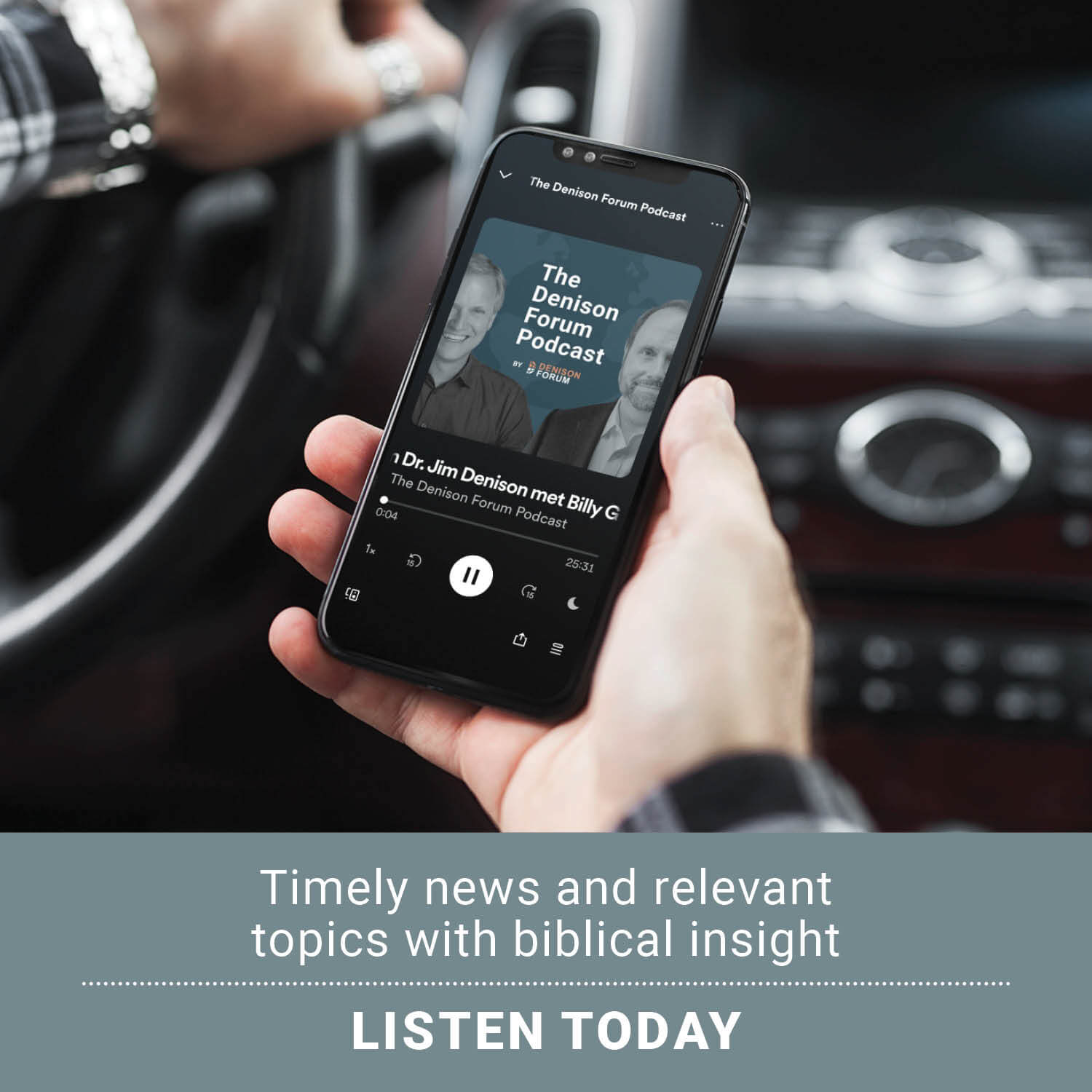
A man with a gloved hand turns off the intravenous drug system to an unconscious patient, symbolic of assisted suicide. Christians wrestling with this issue will want to know: What does the Bible say about euthanasia? © By sudok1/stock.adobe.com
Euthanasia. Assisted suicide. “Death with dignity.” Are you familiar with these terms? Even more pressing, do you know what the Bible says about euthanasia?
Guide to “What does the Bible say about euthanasia?”
- Euthanasia and the will of God
- What is “active” and “passive” euthanasia?
- Ways to choose euthanasia
- Medical issues
- Definitions of “death”
- Is euthanasia, or “physician-assisted suicide,” biblical?
- Why are active euthanasia and “physician-assisted suicide” on the rise?
- Is it biblical to remove life support from “brain-dead” patients?
- Created in the image of God
- Dr. Jim Denison’s position
- Medical care and the power of God
“Sarco” is “a coffin-size pod you get into in order to painlessly and peacefully kill yourself on purpose.” The suicide chamber rapidly replaces the oxygen in the pod with nitrogen gas, causing what the article describes as a “quick, painless” death. While they’re not available to the public, the design and model stirred up a considerable backlash.
Physician-assisted death (PAD) is legal in ten US states and the District of Columbia. Said differently, PAD is available to one in five Americans today. Everywhere that the procedure is not legal, it is usually criminal.
Canada legalized this procedure and calls it Medical Assistance in Dying (MAID). Over 3 percent of all deaths in Canada in 2021 were by legally assisted suicide. Suicide with the help of physicians continues to increase year over year. They are set in March of 2023 to make mental illness a valid condition for requesting MAID. Canada is also considering whether to extend access to MAID to some underage teenagers. U.N. human rights experts expressed “grave concern” over Canada’s lenient euthanasia laws.
We can expect the push for PAD to increase in the future in the US. A 2018 Gallup poll found that nearly seven in ten Americans (72 percent) say “doctors should be allowed by law to end the patient’s life by some painless means if the patient and his or her family request it.”
Those in support of euthanasia often call it “death with dignity.” One organization called “Compassion and Choices” advocate for euthanasia. Others call this “the right to die.”
So how did suicide become associated with compassion and dignity in our culture?
What about more complex cases, like with people in comas, “brain-dead” states, or put on life support against their will?
What does the Bible say about assisted suicide?
Euthanasia and the will of God
You may remember Terri Schiavo and the national debate which surrounded her death. She had been living in a “persistent vegetative state” (PVS) since suffering a stroke in 1995. Now her husband wanted to turn off the machines, while her parents fought to keep her alive. The courts finally decided in the husband’s favor, and she died on March 31, 2005.
Most of us who watched the tragedy unfold wondered what to think. The legal issues involved in her medical care and death were enormous. When should society guarantee a person’s right to refuse life support? What kinds of statements and/or documents are necessary? Absent these, is the decision best left to the spouse or other immediate family? What role should healthcare providers play?
Nearly every person I spoke with on this subject said that he or she would not wish to be kept alive under such circumstances. Nearly every parent would want a role in making such a tragic decision. The legal and political issues raised by this tragedy are still being debated.
Unfortunately, any of us could find ourselves where Mrs. Schiavo’s family was for fifteen years.
What is “active” and “passive” euthanasia?
In trying to understand this issue, first I had to learn the language and history of the debate. Here’s a brief description of terms used by the media when they report on the subject.
“Euthanasia” is derived from the Greek word eu (well) and thanatos (death). It usually means a “good death” or “mercy killing,” and is understood to be the provision of an easy, painless death to one who suffers from an incurable or extremely painful affliction. Such an action is considered proper only when the suffering person wishes to die, or is no longer able to make such a decision.
A distinction is usually made between “active” and “passive” euthanasia. Active euthanasia occurs when someone acts to produce death. This is often called “assisted suicide.” Active euthanasia is medical intervention leading directly to death.
“Passive” euthanasia occurs when the patient is treated (or not treated) in a way that leads to death, but actions are not taken to cause death directly.
A third category has become common in recent years. “Letting die” refers to medical actions taken to enhance the patient’s well-being during the dying process. Unlike passive euthanasia, the doctor does not intend for the patient to die as a result of this decision. Rather, the doctor withholds medical treatments which intensify suffering or merely postpone the moment of death for a short time.
For instance, it is not considered passive euthanasia to discontinue chemotherapy in cases of advanced cancer, especially if the drugs increase the suffering of the patient. The doctor does not intend this decision to cause death, even though death may result from his or her action.
In these terms, Terri Schiavo’s death resulted from passive euthanasia, since physical sustenance was withdrawn for the purpose of ending her life. It was not active euthanasia, because the doctors actively introduce anything to kill her, nor did they help her kill herself. And, unlike most chemotherapy, food and water did not heighten her suffering, so it was not “letting die.”
The life support was removed for the purpose of causing her death.
Ways to choose euthanasia
The decision to enact passive euthanasia is termed “nonvoluntary” since patients like Mrs. Schiavo cannot express their wishes. However, her parents could call the decision “involuntary,” believing that it went against her wishes as she would have expressed them. Her death would have been “voluntary” if she had given “informed consent” while motivated by her own best interests (unlike a person suffering from mental or emotional illness who wishes to die). And, of course, involuntary euthanasia is universally illegal—that’s just murder.
If Mrs. Schiavo had executed a “durable power of attorney,” she would have signed over all responsibility for her medical decisions to another person, likely her spouse. Because she did not take this action, the court gave her husband the responsibility to make medical decisions for her, a decision known as “substituted judgment.”
Medical issues
Maintaining Terri Schiavo’s life would have required “heroic” or “extraordinary measures,” because it required life support. Some patients wish only “ordinary means” which offer a reasonable hope of benefit and are not excessively burdensome. A third means of support could be called “basic,” providing only nutrition and water.
The doctors treating Mrs. Schiavo were required to help their patient (“beneficence”) and to refrain from harming her (“nonmaleficence”). They could ethically provide medical assistance to alleviate any suffering, even if such help shortened her life. This “double effect principle” assures that doctors do not act immorally if they intend only the good effect, do not use bad as a means to good, and create good at least equal to the bad. For example, doctors can prescribe morphine to alleviate the suffering of a terminally ill patient, even if a side effect of morphine in that patient will shorten the person’s life, unless they intend the drug to shorten or end that life.
Definitions of “death”
These definitions are obviously very complicated. I thought that at least the definition of “death” would be easy to state, but I was wrong. Doctors usually consider “death” to occur when circulation or respiration ceases irreversibly, or when the whole brain does the same.
But what is “brain death”? The “upper brain” supports consciousness, while the brain stem controls body functions such as breathing and heart rate. If the upper brain has died, the patient is considered to be in a “persistent vegetative state” (PVS). There are estimated to be 10,000 PVS patients in the United States. This was reported to be Mrs. Schiavo’s condition.
If the brain stem has also died, the patient is considered to have suffered “brain death.” Because nerve cells do not regenerate, both upper-brain and total brain death are completely irreversible.
Is euthanasia, or “physician-assisted suicide,” biblical?
First, let’s make it clear that both active euthanasia and “assisted suicide” are unbiblical. Active euthanasia is the overt, intentional taking of life, and is prohibited by the Sixth Commandment.
Euthanasia broadly refers to when the physician directly ends the patient’s life, whereas physician-assisted death/suicide refers to when a physician provides lethal medication to the patient, allowing them to take their own life. For non-physicians, assisting someone to commit suicide is strictly illegal.
Not all patients who are given death-inducing drugs take them. In California, for example, between 2016 and 2020, nearly 3,000 people received drugs for suicide from physicians, but only 1,800 actually ended their own lives with it.
And, physician-assisted suicide conducted in the US requires the patient to meet certain parameters:
- “Patient must be a resident of the state.
- Patient is mentally competent, terminally ill, and predicted to live only a short while (typically six months).
- Patient’s request was voluntary.
- Patient is given multiple opportunities to change their mind.”
That said, the phrase “terminal illness” applies more broadly than is obvious. If someone has a non-terminal, treatable illness but refuses to take treatment so that they will die within six months, that can count as a “terminal illness.”
Given all of these guidelines, is physician-assisted suicide biblical? No.
God’s command “Do not commit murder,” the intentional taking of life applies to self-murder. Encouraging or aiding someone else in sin is itself a sin (Luke 17:1) While death, especially a lonely, painful death, is frightening, we can trust the end of our lives to God. Assisting someone else to kill themselves is assisting someone else to sin in an irreversible, detrimental way.
For centuries, church leadership across denominations uphold the judgment that assisting someone else’s suicide is sinful.
And, as one study published by the NIH about the ethical dilemma points out: “The medical profession (and the patient) has no empirical knowledge of the condition of being dead (i.e. whether there is life after death or what it is like to be dead).”
In other words, science cannot tell us what the experience of death is like or if there is life after death. Medicine should uphold life and alleviating suffering as paramount, but since medicine cannot know what happens after death, it should not actively cause death in the hopes of alleviating suffering.
Even if someone’s destination is heaven after they die, it does not permit them to commit suicide. As Paul writes, although he desired to “depart and be with Christ,” he writes, “If I am to live in the flesh, that means fruitful labor for me.” (Philippians 1:22–23)
(For more on suicide, read “What does the Bible say about suicide.” Call or text 988 if you are considering suicide.)
Why are active euthanasia and “physician-assisted suicide” on the rise?
The Alliance Defending Freedom writes, “Advocates for physician-assisted suicide describe the practice as “death with dignity.” In reality, it is a weapon used to target the vulnerable and the sick that only harms those who need competent and compassionate medical care and community services.”
The Atlantic published a moving piece, “Why Disability-Rights Advocates Are Fighting Doctor-Assisted Suicide.” Gorman corresponds with Anthony Orefice, a man who was paralyzed from the chest down from a motorcycle accident and was told he would not survive. Now, over twenty years later, he’s married, has a child, and owns a successful business.
He says, “Depression . . . is part of the healing process.” Would he have thrown his life away at the time? It’s possible. He’s glad California didn’t have its physician-assisted suicide law back then.
There’s a reason why people with disabilities oppose physician-assisted suicide so strongly. Theresia Degener, Professor of law and disabilities studies said to AP, “The implication of (Canada’s) law is that a life with disability is automatically less worth living and that in some cases, death is preferable.”
The argument that people with disabilities would want to kill themselves is a slap in the face to those courageous people who’ve lived with disabilities their whole lives.
The default in our culture is choice. Even though the American Psychological Association does not allow therapists to recommend suicide, in their 2017 resolution on PAD they conclude that the board “neither endorses nor opposes assisted dying at this time.” This essentially leaves it up to the patient and physician.
PAD takes advantage of many disadvantaged people, in spite of attempted safeguards. In Love Thy Body, Nancy R. Pearcy calls our culture’s views a “death movement.” We view our bodies as subject to our own preferences and desires. When the culture loses the moral fact that life is intrinsically valuable, we slide to horrible consequences.
Ross Douthat argues that Euthanasia is destroying Canada. “When 10,000 people are availing themselves of your euthanasia system every year, you have already entered the dystopia.”
Many who support so-called “death with dignity” paint the picture of patients suffering terribly under constant, excruciating pain, desperately wanting a way out through death. But critics predicted that PAD would be used by people facing financial burdens, struggling with mental illness, and people without many social connections—not by people beset with intense pain.
And they were correct.
According to one study: “Main reasons for requesting MAID were a self-perceived unacceptable quality of life, most commonly owing to loss of independence, mobility, ability to communicate, a sense of purpose, and participation in meaningful activity. Some people expressed fear of future suffering and future disability. Pain was seldom mentioned as a cause of suffering.”
This demonstrates the culture’s worship of independence. For thousands, it is better to commit suicide than lose their semblance of control. While we can sympathize with the dark feeling of losing personal freedom, we must encourage people at the end of their life to draw on courage from Christ to live as best as they can, drawing from his love and wisdom.
Pushing through suffering, financial burdens, end-of-life dependence, and disabilities show greater dignity than giving into death through physician-assisted suicide. That grit to overcome demonstrates persistent strength and courage and merits more dignity than choosing death.
We should place a higher dignity on character, not acquiescence to one’s feelings and preferences.
For the remainder of this essay, we will consider euthanasia only as the subject relates to passive or “letting die” options.
Is it biblical to remove life support from “brain-dead” patients?
In cases of PVS (“persistent vegetative state” caused by upper-brain death), what medical options could be considered scriptural? What does the Bible teach regarding the larger subject of euthanasia?
Ethicists seem to agree that in cases of total brain death or upper-brain death, “heroic” measures are unnecessary. Many believe that ordinary treatment is not obligatory, and “letting die” is moral. Some, however, believe that it is wrong to withdraw food and hydration, allowing the body to starve. This approach views the life as “holistic,” meaning that a functioning body is still united to the “soul,” the “image of God.” Such a person is still a member of the human race, and deserves at least basic care (food and water), if not ordinary care (routine medical support).
Other Christians believe that brain-dead or PVS patients are simply bodies, that their souls or spiritual selves have gone on to eternity. Withdrawing food and water from such patients is then considered to be morally right. In this view, without a functioning brain, the body no longer sustains a soul or retains the image of God. Medical personnel should always care for those who possess potential for conscious life. But when a PVS exists, there is no possibility of brain regeneration and the “soul” has left the body.
Still others support “vitalism,” the belief that physical function by itself is sacred. In this view, even if the “soul” has departed a body which is brain-dead or in a PVS, the body deserves medical treatment to the very end of physical life. Some “vitalists” support ordinary care or basic care for such a body, while others argue for heroic means to preserve physical function as long as possible.
In these terms, Mr. Schiavo’s decision to withdraw food and water would reflect the belief that his wife’s soul had departed her body, and that ending basic care was morally right. Given his insistence that this decision reflected her wishes, his directive was followed by her physicians.
Which view is the most biblical?
Created in the image of God
One way to answer our question involves the scriptural description of humanity as created “in God’s image.” Genesis says that “God created man in his own image, in the image of God he created him; male and female he created them” (Genesis 1:27). What does it mean to be in God’s “image”?
Most theologians would focus on humanity’s uniqueness. What is it which separates us from other life? Such characteristics make us uniquely “the image of God.” Four biblical statements answer the question:
We are created in God’s image to “rule over” his creation (Genesis 1:28).
The Lord warns us, “Whoever sheds the blood of man, by man shall his blood be shed, for in the image of God has God made man” (Genesis 9:6).
Paul instructs a man not to “cover his head” in worship, “since he is the image and glory of God; but the woman is the glory of man” (1 Corinthians 11:7).
James criticizes the fact that “with the tongue we praise our Lord and Father, and with it we curse men, who have been made in God’s likeness” (James 3:9).
From these specific biblical references to the “image” or “likeness” of God, we can suggest that a person retains this “image” when he or she is able to relate to the rest of God’s creation as his representative on earth. We are to “rule” or govern creation, represent God to others, and value each other. In this sense we may be created not so much “in” the image of God but “as” his image on earth.
By this reasoning, we lose the “image of God,” that which makes us uniquely human and valuable, when we lose the ability or potential to relate to ourselves, our environment, other humans, and God. A baby in the womb and a comatose patient are each a person, in that they retain the potential for such interaction. But a PVS individual is not.
Dualistic and holistic views
How does this distinction relate to the body? Some believe that the “soul” can depart the body before its physical death. This is typically considered the “dualistic” view, separating the physical and the spiritual.
Jesus cried from the cross, “Father, into your hands I commit my spirit” (Luke 23:46). Stephen prayed before his physical death, “Lord Jesus, receive my spirit” (Acts 7:59). Some interpreters use these statements to separate the soul or “image of God” from the body. In the belief that a PVS patient does not and cannot exhibit the image of God, it is then concluded that the person’s “soul” has left the body. Any physical support for the body, even food and water, is thus unnecessary.
Others adopt a holistic understanding of the biblical view of humans. While Greek thought separated body, soul, and spirit, Hebrew theology did not. It is not so much that we “have” a body, soul, and spirit which can be identified as separate entities. Rather, we “are” body, soul, and spirit. These words are different dimensions of the one person (cf. 1 Thessalonians 5:23).
In the holistic view, we retain the “image of God” so long as our bodies retain some dimension of physical life. Mrs. Schiavo’s parents spoke passionately of the joy she continued to bring them, the love they felt for her despite her condition. They would argue, I’m sure, that she was still a “person” to them. In the holistic approach, so long as a person is alive physically, that person is the “image of God.”
This view would see Mrs. Schiavo, as long as she lived, as a person deserving of basic physical support. Food and water would be essential, appropriate provision for any person. And so the decision to withdraw them would be wrong.
Permission to die?
What if she had previously directed that such withdrawal occur? Then the law would require that her wishes be honored. But should it? Should we be permitted to mandate that heroic or even ordinary measures not be taken to maintain our lives?
The dualistic view believes that a patient loses the “image of God” in certain medical conditions, and would support that person’s previously stated right to refuse medical life support. The holistic view, taken to its logical conclusion, would seem to require at least food and water to be provided, in the desire to preserve and honor the “image of God.” Some would argue that even heroic measures are required and that a person should not be allowed to refuse them. Just as we require passengers in cars and airplanes to wear seat belts, so we should require patients to receive all medical support for as long as their bodies survive.
My position
I believe that the holistic view reflects God’s understanding of humanity.
But I also believe a distinction between heroic, ordinary, and basic life support is warranted.
In my view, it is permissible to cease heroic or even ordinary life support for a person who possesses no actual or potential capacity for relational life on any level, as that person cannot demonstrate the “image of God.”
But I also believe that so long as the body is alive, the “person” is alive. And persons deserve at least basic (food and water) support, for as long as they live. Although the state allows us to choose passive euthanasia, medical actions which are intended to bring about our death, I do not believe such a decision is warranted biblically.
Let’s assume that Terri Schiavo did in fact express her desire to refuse medical life support and even to experience passive euthanasia. Her husband and doctors then acted within the law in withdrawing food and water for the purpose of ending her life. But I do not believe she or they acted within biblical guidelines. In my view, we should not be permitted to request medical steps which are intended to cause our death. Absent our clearly expressed intention, our caregivers should not be permitted to choose such actions.
However, we and/or our doctors can choose to “let die,” to take medical steps which do not prolong our lives. When these medical actions enhance the present quality of life, even if they shorten the life span of terminally ill patients, they are especially warranted.
Medical care and the power of God
I wish I had written this essay before my conversation with that father about ending his daughter’s life support. The next time I get such a heartbreaking phone call, I’ll ask the family about their intentions. Do they intend to hasten or even cause death? I do not believe such a decision is defensible. On the other hand, do they wish simply to allow nature to take over, “letting die” if this is the natural result of the patient’s condition? In this situation, medical support is not prolonging life—it is prolonging death.
I will remind such a family that maintaining or ending medical care does not necessarily affect the intervention of God. The Lord Jesus raised Lazarus from the grave after he had been dead four days (John 11:38-44). He does not require medical life support to heal. And if it is his will that the patient not survive physically, no medical means can defeat his purpose.
If all medical options have been exhausted, and there is no plausible reason to believe the patient will ever improve, a family who ends heroic or ordinary life support is not removing the possibility of divine intervention. Rather, they are placing their loved one in God’s hands, allowing him to heal physically or eternally.
Then the Lord will heal as he wills. He sometimes heals us physically, continuing our lives in our fallen bodies on this fallen planet. But he eventually heals us eternally, taking believers from earth to heaven, from disease and death to paradise.
Either way, we are well.













